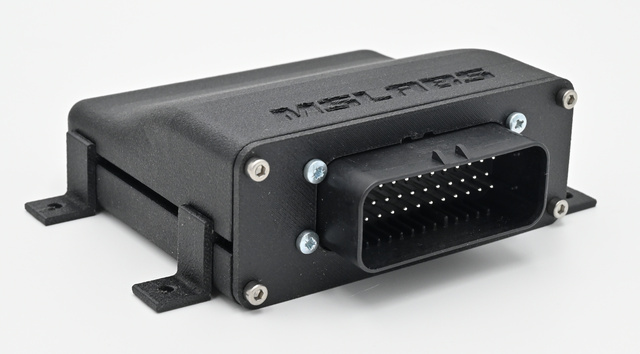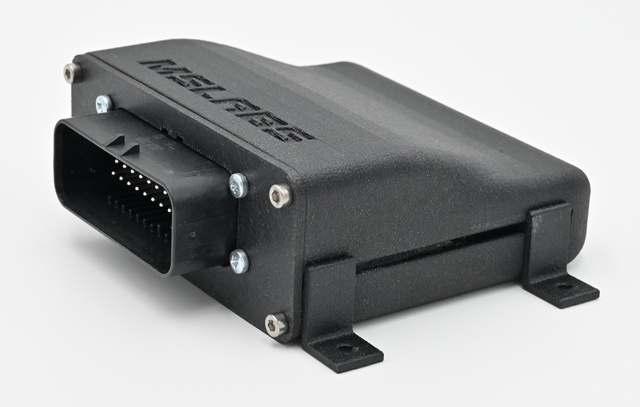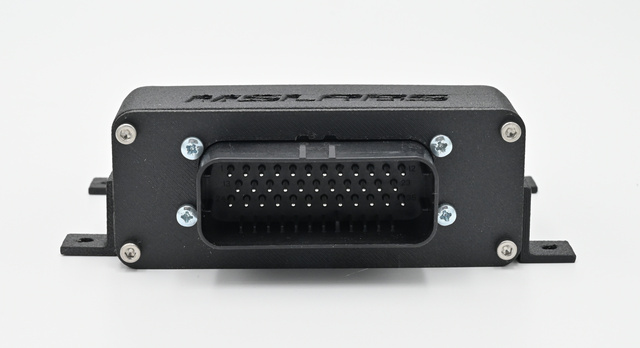Overview
The Drive by Wire controller by MS Labs has been used on many local projects for quite some time or was integrated on ECUs (like the Mazda MX-5 NC) for almost a decade but was not available publicly–until now.
The DBW controller allows you to use almost any throttle body and pedal available (supported: any throttle body/pedal that outputs 0-5V signals. PWM or SENT signals are currently NOT supported). The controller has 4 dedicated analog inputs, 2 for the throttle body sensor and 2 for the accelerator pedal.
The controller has 7 different 3D throttle maps, which can be changed with a variety of different methods, such as with an on/off switch (simple two map switching), by gear, by cal switch/analogue sensor or by manually selecting a map through the software. The 3D maps are 8x8, with RPM and accelerator pedal as the axis.
The controller has fully programmable PID for the control of the throttle, with 1ms control period and two different PID sets: one for driving and one for idle. This allows to tune the motor control without having to compromise between fast control and precise control.
The DBW controller has a totally independent idle control system that bypasses the MS3's idle control system. This allows for excellent idle control. There are 10pt 2D tables for cranking position, warmup/base position, idle target RPM, minimum idle position by CLT, dashpot adder and more. Of course idle control can be open loop or closed loop. For large throttle bodies (relative to the engine displacement), we recommend activating the MS3's idle advance feature. There are CL idle lockouts by RPM, gear, clutch/neutral status, power steering status (compatible ECU required).
Revmatching on downshifts is supported. The controller can revmatch if it detects a clutch press or a shifter sensor (downshift) signal or both. The revmatch is activated if the above condition is detected and the RPM and vehicle speed are above a (configurable) threshold. When all the conditions are met, the controller will calculate the target RPM for the revmatch, and will apply a throttle adder to the final throttle position target.
There is also traction control available–the controller will detect vehicle wheel slip based on the front/rear ratio, and apply a limit on the maximum throttle position to stop the slip and increase traction. There is a 20-point 2D available for this–wheel slip % vs maximum allowed target throttle. Parameters to allow TC include minimum RPM, minimum pedal position, minimum throttle position, minimum MAP, minimum driven and undriven wheel speed and minimum speed difference between wheels. The TC can optionally be disabled by the OEM TC button on supported cars. Please contact us fore more information on this feature.
Finally, there are many safety functions built into the controller. The controller uses a microprocessor that is designed and recommended for automotive use. The controller actively monitors the power supply and will enter a safe mode if adequate voltage is not available. The CAN is constantly monitored and failure to receive critical messages such as RPM will force the controller into a fail safe. The accelerator pedal and throttle body sensors are constantly monitored (1000 times per second!) for faults, including undervoltage or overvoltage of the specified limits and maximum allowed deviation between the two sensors of each device (ie between sensor 1 and sensor 2 of the pedal; sensor 1 and sensor 2 of the throttle body). The user can configure if a failure will trigger a limp mode or an engine shutdown. Finally, the controller will monitor the throttle body itself. Conditions such as failure to meet the target for too long, excessive duty required to meet the target, excessive current required to meet the target can all force either a limp mode or an engine shutdown. Finally, there is a hardware watchdog that will reset the controller in case that the controller becomes unresposive due to a software issue.


